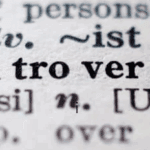
A Chronological Journey of Car Manufacturers in the Indian Market

The Indian automotive market has seen numerous global car manufacturers enter and exit over the years. Here’s a chronological overview of these changes, presented in a grid format with key statistics and reasons for exit.
| Manufacturer | Entry Year | Exit Year | Key Stats and Highlights | Reason for Exit |
|---|---|---|---|---|
| Hindustan Motors | 1942 | – | Known for the Ambassador, once a symbol of luxury and power in India. | N/A |
| Premier Automobiles | 1944 | – | Known for Premier Padmini, popular as a taxi in Mumbai. | N/A |
| Maruti Suzuki | 1981 | – | Revolutionized the Indian car market with the Maruti 800; has the largest market share in India. | N/A |
| Fiat | 1951 | 2019 | Popular models included Fiat 1100 and Fiat Uno; later introduced the Linea and Punto. | Struggled with competition and outdated product lineup. |
| Daewoo | 1995 | 2003 | Known for models like Cielo and Matiz. | Bankruptcy of the parent company and inability to compete. |
| Ford | 1995 | 2021 | Launched popular models like the Ford Ikon, EcoSport, and Endeavour. | Poor sales, high operational costs, and lack of sustainable business model in India. |
| Peugeot | 1994 | 1997 | Launched the Peugeot 309. | Labour issues and financial losses. |
| General Motors (Chevrolet) | 1996 | 2017 | Known for models like the Chevrolet Spark, Beat, and Cruze. | Poor sales, operational losses, and shifting focus to emerging markets with better profitability. |
| Hyundai | 1996 | – | Achieved success with models like Santro, i20, and Creta; currently one of the top players in the Indian market. | N/A |
| Toyota | 1997 | – | Known for models like the Innova, Fortuner, and Corolla; focuses on reliability and customer satisfaction. | N/A |
| Honda | 1995 | – | Popular models include City, Amaze, and Jazz. | N/A |
| Renault | 2005 | – | Gained popularity with models like the Duster, Kwid, and Triber. | N/A |
| Nissan | 2005 | – | Known for the Micra, Sunny, and Kicks. | N/A |
| Volkswagen | 2007 | – | Entered with models like Polo and Vento. | N/A |
| Skoda | 2001 | – | Established a strong presence with models like Octavia, Rapid, and Superb. | N/A |
| Tata Motors | 1945 | – | Known for Indica, Nexon, Harrier, and Safari; significant player in both passenger and commercial vehicle segments. | N/A |
| Mahindra & Mahindra | 1945 | – | Dominates with models like Scorpio, Thar, and XUV500; strong presence in SUVs and commercial vehicles. | N/A |
| Fiat Chrysler (Jeep) | 2016 | – | Jeep Compass became a popular model in India. | N/A |
| MG Motor | 2019 | – | Made a strong entry with models like Hector and ZS EV, focusing on connected and electric vehicles. | N/A |
| Kia Motors | 2019 | – | Rapidly gained market share with models like Seltos, Sonet, and Carnival. | N/A |
| Datsun | 2013 | 2020 | Re-entered with affordable models like Go and Redi-Go. | Poor sales performance and strategic realignment by parent company Nissan. |
| BYD (Build Your Dreams) | 2021 | – | Entered the Indian market with electric vehicles, focusing on the e6 and upcoming models. | N/A |
| Citroën | 2021 | – | Launched with the C5 Aircross SUV, plans to expand with more models tailored for the Indian market. | N/A |
Conclusion
The Indian car market has been dynamic, with several global players entering and exiting over the years. Companies that have thrived are those that adapted to the unique demands of Indian consumers, focused on localization, and maintained a robust after-sales network. Conversely, those that struggled often faced challenges like stiff competition, operational losses, and failure to align their offerings with market needs. The landscape continues to evolve, promising new opportunities and challenges in the future.
Hello, I am Aman (: Full Time Traveler :) At the age of 41, in April 2023, fueled by my love for travel and the determination not to remain fixed like a tree, I embarked on a bold journey. Having dedicated 17 years to a corporate job, I chose to transition from a full-time employee to a full-time traveler, driven by the desire to break free from the routine and constraints of a conventional life. Along the way, I not only explored the wonders of travel but also uncovered the transformative power of financial freedom. I realized how it could liberate me to lead a life teeming with adventure, purpose, and fulfillment. Through my blogs, I am passionately sharing my story, aiming to inspire and provide valuable guidance to those, like me, who aspire to weave travel into a life overflowing with limitless possibilities.






















Post Comment
You must be logged in to post a comment.